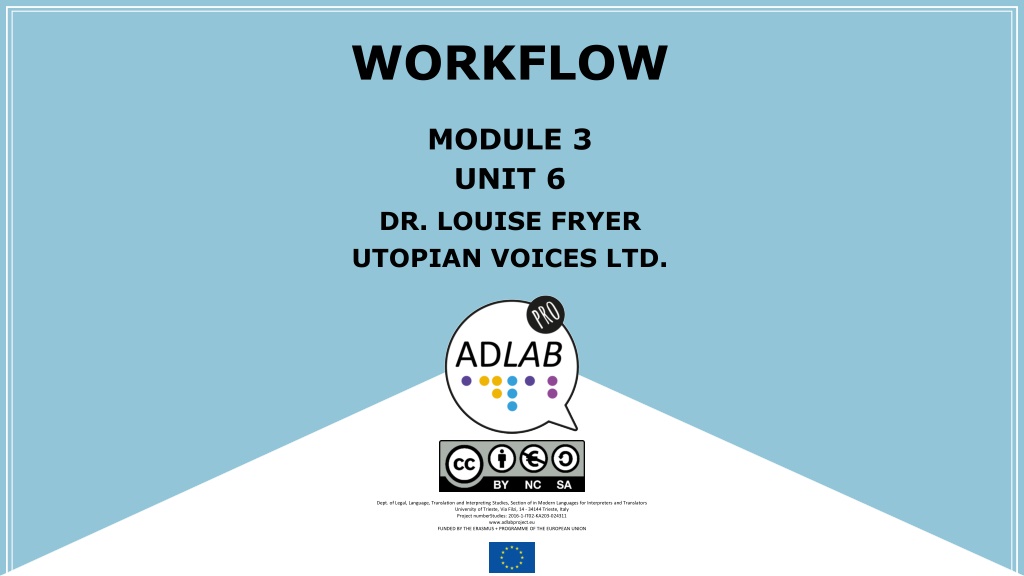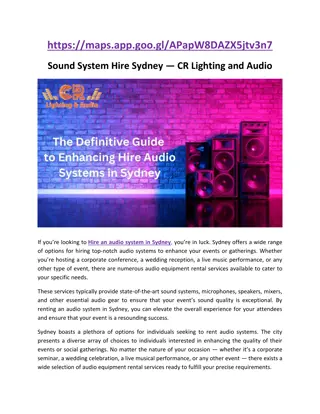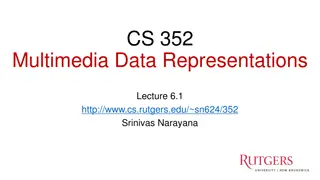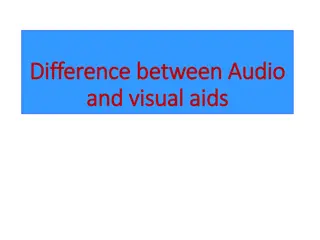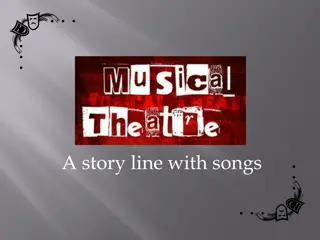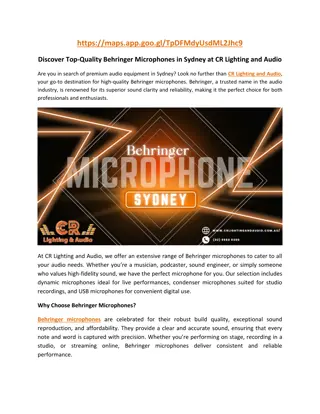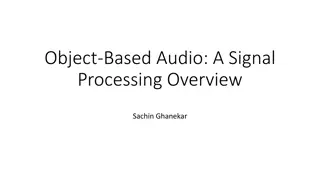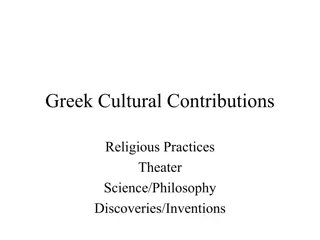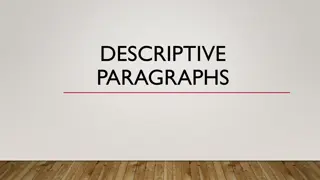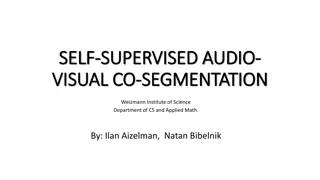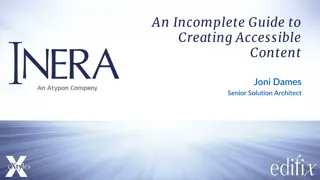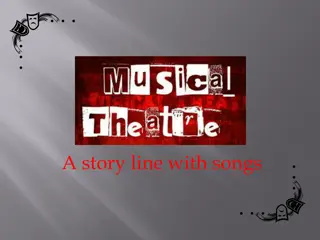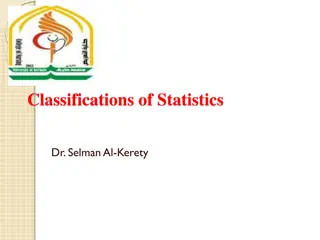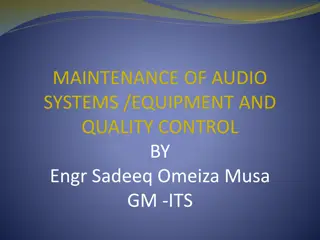Accessible Descriptive Audio for Theater Performances Workflow
This content outlines the workflow for creating Accessible Descriptive Audio (AD) for theater performances, focusing on traditional AD methods. It covers steps such as watching live performances, recording the AI script, conducting dry runs, and post-show feedback. Various individuals, including describers, stage managers, and technicians, play crucial roles in ensuring the success of AD performances. Collaboration and coordination are essential for a seamless AD production.
Download Presentation

Please find below an Image/Link to download the presentation.
The content on the website is provided AS IS for your information and personal use only. It may not be sold, licensed, or shared on other websites without obtaining consent from the author. Download presentation by click this link. If you encounter any issues during the download, it is possible that the publisher has removed the file from their server.
E N D
Presentation Transcript
WORKFLOW MODULE 3 UNIT 6 DR. LOUISE FRYER UTOPIAN VOICES LTD. Dept. of Legal, Language, Translation and Interpreting Studies, Section of in Modern Languages for Interpreters and Translators University of Trieste, Via Filzi, 14 - 34144 Trieste, Italy Project numberStudies: 2016-1-IT02-KA203-024311 www.adlabproject.eu FUNDED BY THE ERASMUS + PROGRAMME OF THE EUROPEAN UNION
SORT THE DETAILS Traditional or integrated? How many describers? Fee. Tools. Dry run date. PSL.
TRADITIONAL AD WORKFLOW Watch live performance: take notes on set, characters and costumes and any hard to see on-stage action. Meet the Stage Manager and walk the set. Write the Audio Introduction (AI) with another Describer.
RECORD THE AI Typically 3 weeks before the AD performance. Send your AI script in advance to the recording engineer and producer. The theatre will distribute/upload the recording.
DRY RUN Takes place the night before the AD performance (earlier for more for complex shows). Theatre technicians set up equipment. An hour before carry out a Sound Check.
AFTER DRY RUN Debrief to discuss your AD script.
AD PERFORMANCE Touch Tour. Sound check. Note any changes.
POST-SHOW Announce the next AD production. Report any technical issues. Feedback from Front of House staff and AD users.
PEOPLE All of the following might be involved in an AD performance: Access Officer. Sound Technicians. Recording Engineer/Producer. Front of House Manager.
PEOPLE Stage Manager. Assistance Ushers. AD user/evaluator. Describer(s).
COLLABORATION The buck stops with the Describer(s). You are not responsible for all the steps. You need to check that all the steps are covered by ensuring that the venue knows what to expect and what to provide.
TIMESPAN Takes much longer than AD for screen. May begin 3-4 weeks before the performance. You may be booked several months before. See a touring production in another venue. Or see it Tues, dry run Friday, AD Sat.
RECORDED AD Some theatres record the AD performance. Can be triggered live at future performances by a technician. Some French theatres use this semi-live approach . Integrated approached involves the Describer in rehearsals and conversations with the company.
WORKFLOW MODULE 3 UNIT 6 DR. LOUISE FRYER UTOPIAN VOICES LTD. Dept. of Legal, Language, Translation and Interpreting Studies, Section of in Modern Languages for Interpreters and Translators University of Trieste, Via Filzi, 14 - 34144 Trieste, Italy Project numberStudies: 2016-1-IT02-KA203-024311 www.adlabproject.eu FUNDED BY THE ERASMUS + PROGRAMME OF THE EUROPEAN UNION
The preparation of this presentation was supported by ADLAB PRO (Audio Description: A Laboratory for the Development of a New Professional Profile), financed by the European Union under the Erasmus+ Programme, Key Action 2 Strategic Partnerships, Project number:2016-1-IT02-KA203-024311.
The information and views set out in this presentation are those of the authors and do not necessarily reflect the official opinion of the European Union. Neither the European Union institutions and bodies nor any person acting on their behalf may be held responsible for the use which may be made of the information contained therein.
